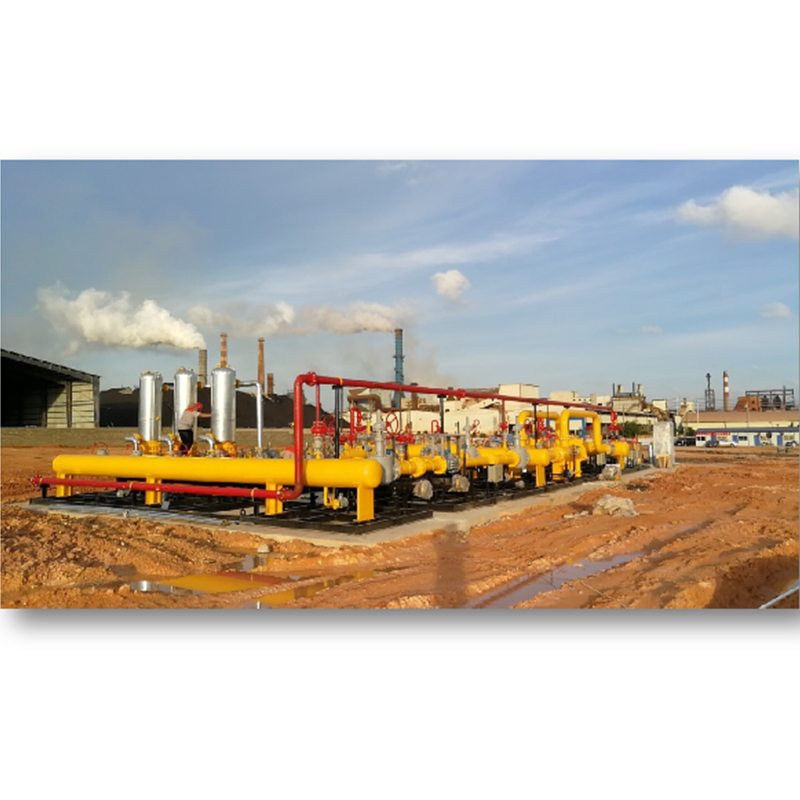
12 月 . 13, 2024 10:42
Back to list
heat exchanger
Understanding Heat Exchangers A Critical Component in Engineering
In the realm of thermal engineering, heat exchangers play an invaluable role by facilitating the transfer of heat from one medium to another. These devices are omnipresent in various industries, including power generation, chemical processing, and HVAC (Heating, Ventilation, and Air Conditioning), serving the crucial function of improving energy efficiency and controlling temperatures in different systems. This article delves into the operation, types, and applications of heat exchangers, underscoring their significance in modern engineering.
At its core, a heat exchanger operates on the fundamental principle of thermal transfer. It allows two fluids at different temperatures to exchange heat without direct contact. The basic operation can be broken down into three key components the hot fluid, the cold fluid, and the heat transfer surface. As the hot fluid flows through the exchanger, it loses heat, which is then absorbed by the colder fluid. This exchange can occur in various configurations, including counterflow, parallel flow, and crossflow, each offering unique advantages depending on the specific application.
Heat exchangers can be broadly categorized into two types shell-and-tube heat exchangers and plate heat exchangers. Shell-and-tube exchangers consist of a series of tubes, with one fluid flowing through the tubes and another fluid circulating around them within a larger shell. This design allows for a significant surface area for heat transfer and is especially effective in high-pressure applications. On the other hand, plate heat exchangers feature a series of thin plates stacked together, forming channels for the fluids. This design results in a compact and efficient heat transfer mechanism, making it ideal for applications requiring lower pressure and temperature.
heat exchanger

The effectiveness of a heat exchanger is often measured by its efficiency in transferring heat, which can be assessed through various factors, including the temperature difference between the two fluids, flow arrangement, and overall heat transfer coefficient. Engineers must consider these parameters when designing or selecting a heat exchanger to maximize thermal efficiency while minimizing energy consumption. The performance of heat exchangers can also be affected by fouling, a process where impurities build up on the heat transfer surfaces, reducing efficiency. Regular maintenance and cleaning protocols are essential to ensure optimal performance and longevity.
Heat exchangers are employed in a plethora of applications across diverse sectors. In power plants, they are integral to converting thermal energy into electrical energy, as they help manage the heat produced during combustion processes. The chemical industry relies on heat exchangers for various processes, including distillation and reaction cooling, ensuring optimal temperatures are maintained for efficiency and safety. In the HVAC industry, these devices are crucial for heating and cooling systems, contributing to improved energy consumption in residential and commercial buildings.
As the global focus intensifies on sustainability and energy efficiency, the development of advanced heat exchangers has gained momentum. Researchers are continuously exploring new materials and designs that enhance heat transfer capabilities while reducing environmental impacts. Innovations such as nanofluids, which are fluids enhanced with nanoparticles, are being studied for their superior heat transfer properties. Additionally, the integration of heat exchangers with renewable energy systems, such as solar or geothermal energy, represents a promising frontier in energy efficiency.
In conclusion, heat exchangers are essential components in many engineering applications, providing the means to transfer heat efficiently between different fluids. Their versatility, coupled with advances in technology, ensures they will continue to play a pivotal role in diverse industries, enhancing energy efficiency and promoting sustainable practices. As engineers and researchers work toward optimizing heat exchanger designs, the potential for improved performance, environmental benefits, and cost savings will undoubtedly rise, forging a path toward a more energy-conscious future.
Next:
Latest news
-
Unlocking The Quality Gas Pressure ReducersNewsNov.01,2024
-
The Role of Gas Pressure Reducing StationsNewsNov.01,2024
-
The Importance and Functionality of Safety Relief ValvesNewsNov.01,2024
-
The Essential Role of Safety Valves in Natural Gas ApplicationsNewsNov.01,2024
-
The Essential Role of Gas Pressure RegulatorsNewsNov.01,2024
-
Enhance Your Premium Gas FiltersNewsNov.01,2024

